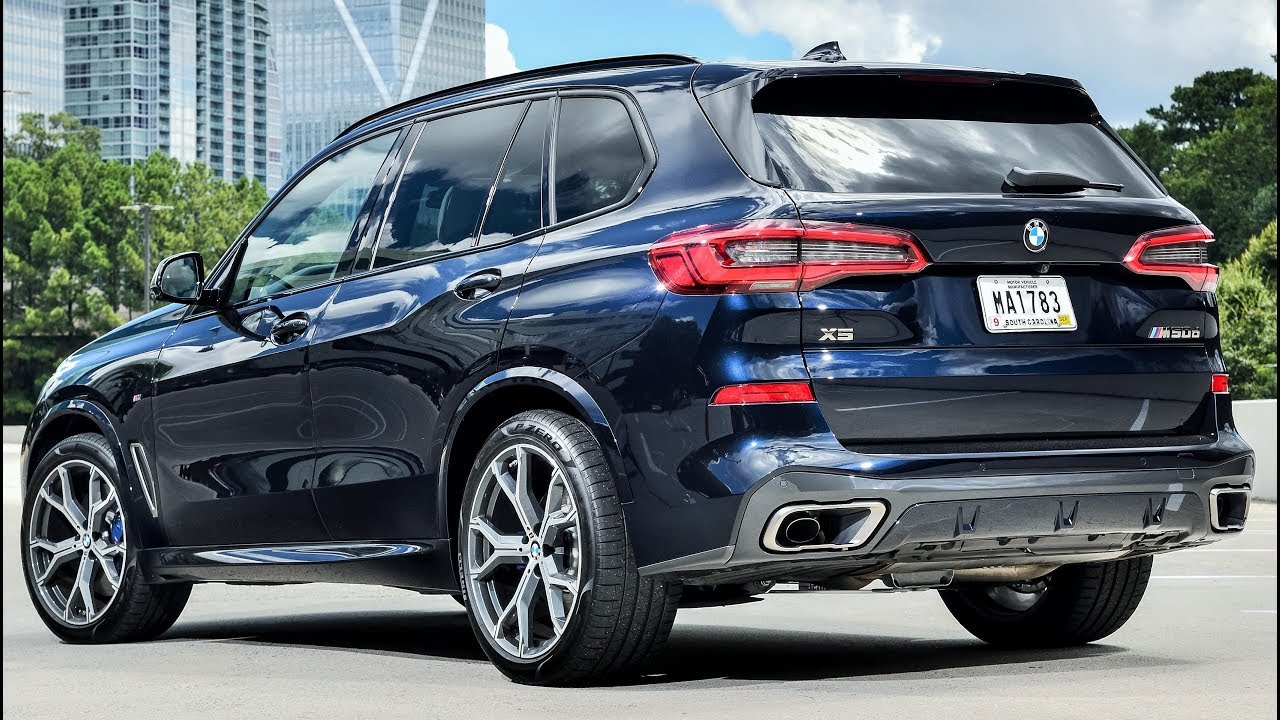2019 BMW X5 M50d – Sporty And Comfort SAV. 2019 BMW X5 M50d G05 – Drive, interior and Exterior. Subscribe.
2019 BMW X5 M50d technical data at glance:
Engine: Six-cylinder in-line diesel engine,
Transmission: eight-speed Steptronic transmission.
Capacity: 2,993cc,
Output: 294 kW/400 hp at 4,400 rpm,
Max. torque: 760 Nm (560 lb-ft) at 2,000 – 3,000 rpm.
Acceleration [0 – 100 km/h (62 mph)]: 5.2 seconds,
Top speed: 250 km/h (155 mph).
The BMW X5 M50d is powered by a sixcylinder in-line diesel engine with a quartet of turbochargers. A six-cylinder inline unit can also be found under the bonnet of the BMW X5 xDrive40i and BMW X5 xDrive30d. All the engines channel their power through an eightspeed Steptronic transmission, while BMW xDrive intelligent all-wheel drive is on hand to ensure that power is translated into secure progress – on or off road.
The pulsating performance of the new BMW X5 M50d is largely down to the sublime diesel engine at work under its bonnet. From its displacement of 3.0 litres, the BMW M Performance model’s six-cylinder in-line unit extracts peak output of 294 kW/400 hp at 4,400 rpm and generates maximum torque of 760 Nm (560 lb-ft) between 2,000 and 3,000 rpm.
These remarkable figures have been achieved by virtue of a multi-stage turbocharging system composed of two high-pressure and two low-pressure turbochargers. This construction produces exceptionally fast build-up of charge pressure from low down in the rev range, meaning that torque becomes available quickly – and in abundance: indeed, over 450 Nm (332 lbft) is served up at just 1,000 rpm. In normal driving situations, both lowpressure turbochargers and one of the two high-pressure units are permanently active. The second high-pressure turbocharger only joins in the fray when the engine speed tops 2,500 rpm. Under hard acceleration from idle, flaps are adjusted so the pair of low-pressure turbochargers can be swiftly bypassed, thereby generating maximum charge pressure with even less delay. To boost the turbocharging system’s efficiency, exhaust gas recirculation is employed for both the high-pressure and low-pressure stages. The sophisticated multi-stage turbocharging technology is complemented by a common-rail direct injection system capable of generating pressures in excess of 2,500 bar. Its precise metering and fine atomisation of the fuel optimises both the engine’s efficiency and its emissions. The new BMW X5 M50d darts to 100 km/h (62 mph) from rest in 5.2 seconds yet.
The design principle underpinning the chassis – based on a double-wishbone front axle and a five-link rear axle – also ticks all the right boxes for supreme traction on rough terrain, coupled with excellent dynamic responses and ride comfort in road driving. The SAV now comes as standard with the Dynamic Damper Control system, whose electronically controlled dampers sharpen the car’s handling dynamics at the same time as increasing ride and suspension comfort. The driver can select from two performance maps – for a more comfort-oriented or sportier driving style – using the Driving Experience Control switch. Standard specification for the new BMW X5 M50d includes model-specific kinematics and elastokinematics for the wheel suspension, individual spring and damper tuning, plus 21-inch M light-alloy wheels with mixed-size tyres. This bespoke configuration increases the BMW M Performance model’s agility and steering precision, enables faster cornering and optimises its transitional responses.
Customers can also specify an Off-Road package, which is being offered here in a BMW X model for the first time. Available for all model variants apart from the BMW X5 M50d, the package’s specification includes rugged underguard elements at the front and rear of the vehicle, along with the two-axle air suspension and electronically controlled rear differential lock. The Off-Road package also features its own special graphics in the instrument cluster and Control Display, and an extra button on the centre console for selecting the four driving modes. The driver can therefore activate the ideal settings for the vehicle’s ride height, the xDrive system, the accelerator response, the transmission control, and the DSC system’s corrective inputs in preparation for driving on a range of surfaces, such as sand, rock, gravel or snow.









